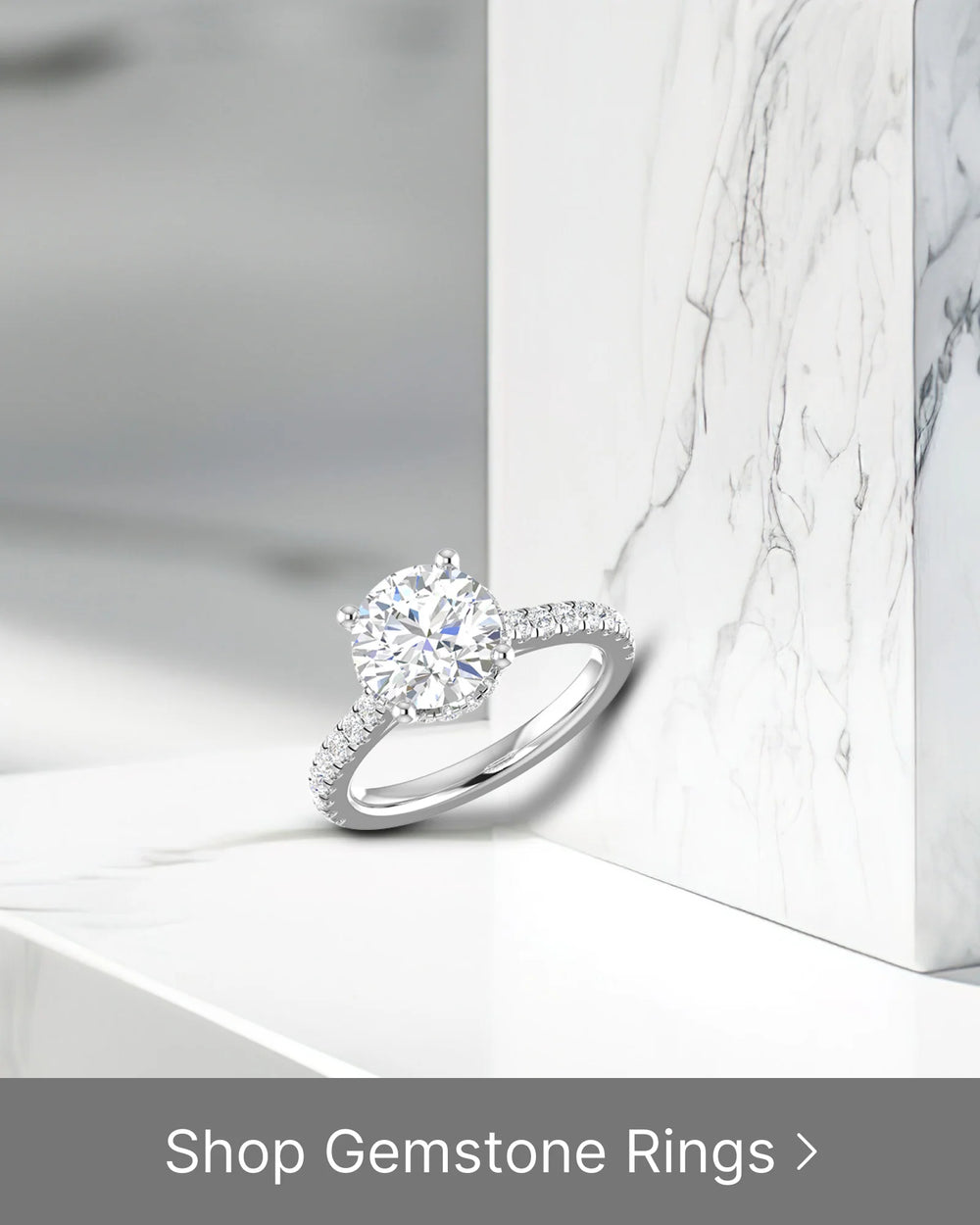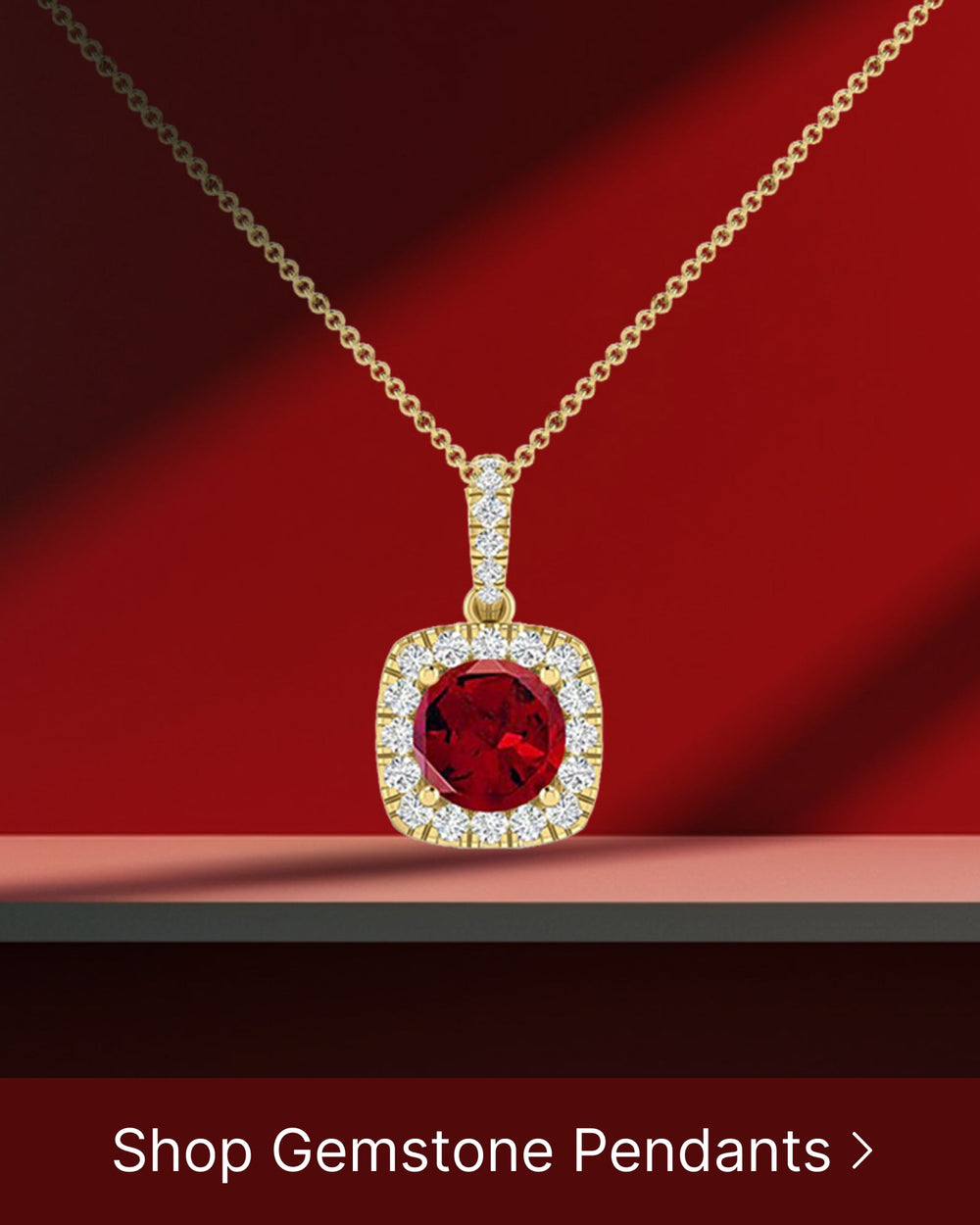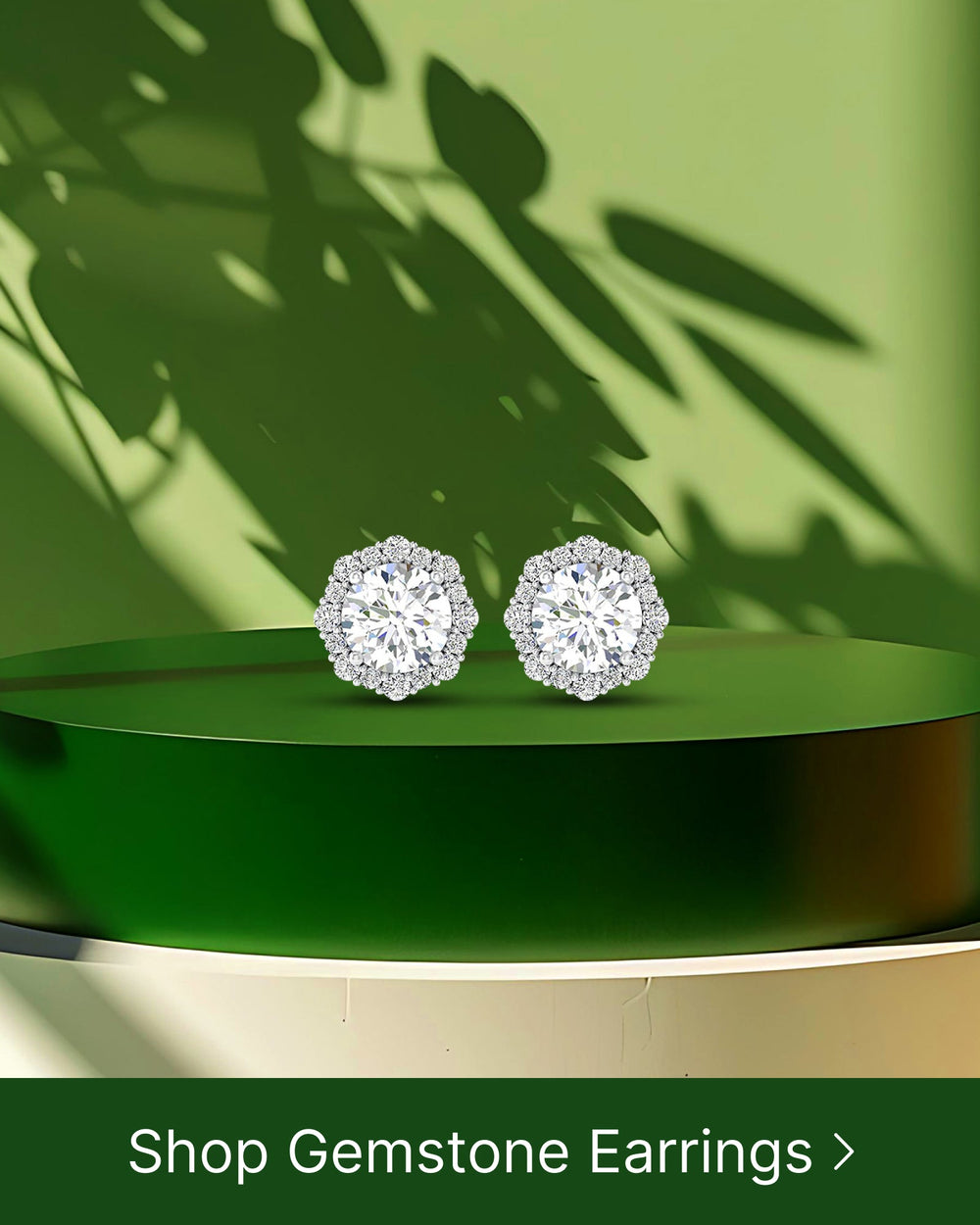Are you tired of suffering from allergies every time you wear jewelry? You're not alone. Many people struggle with allergic reactions caused by the metals in their favorite accessories. But fear not, because there are hypoallergenic options available that can keep you stylish and allergy-free. In this guide, we will explore the causes of jewelry allergies, the science behind hypoallergenic jewelry, various hypoallergenic materials, how to shop for hypoallergenic jewelry, and how to properly care for it.
Understanding Jewelry Allergies
Before we delve into hypoallergenic options, it's important to understand what causes jewelry allergies. The most common allergens in jewelry are nickel, cobalt, and chromium. These metals can cause allergic reactions, ranging from mild irritation to severe rashes. Symptoms can include redness, itching, swelling, and even blistering. If you experience any of these symptoms, it's crucial to identify the culprit and explore hypoallergenic alternatives.
Common Allergens in Jewelry
Nickel: Nickel is the most common allergen found in jewelry. It is often used as a base metal or alloyed with other metals, such as silver or gold. If you're allergic to nickel, it's important to avoid jewelry that contains even trace amounts of this metal.
Cobalt: Cobalt is another metal that can cause allergic reactions in some individuals. It is often found in white gold alloys and can trigger severe allergic responses. If you're sensitive to cobalt, look for alternative metals like platinum or titanium.
Chromium: Chromium is a metal used in stainless steel jewelry. While uncommon, some individuals may develop allergies to chromium. If you experience reactions when wearing stainless steel jewelry, consider exploring other hypoallergenic options.
Symptoms of Jewelry Allergies
It's crucial to be aware of the symptoms of jewelry allergies, as they can vary from person to person. Common signs include redness, itching, swelling, and rash formation. In severe cases, blisters may develop. If you experience any of these symptoms, remove the jewelry immediately and consult a dermatologist for proper diagnosis and treatment.
Aside from nickel, cobalt, and chromium, there are other potential allergens in jewelry that can cause reactions in sensitive individuals. For example, some people may develop allergies to certain gemstones, such as nickel-containing peridot or cobalt-containing blue spinel. It's important to be aware of the specific materials used in your jewelry to avoid potential allergic reactions.
In addition to the metal components, the presence of certain chemicals in jewelry can also trigger allergies. For instance, some jewelry may be coated with a layer of gold or silver plating, which can contain allergenic substances like nickel or cobalt. It's essential to check the quality and composition of the plating to ensure it is hypoallergenic.
Furthermore, the design and construction of jewelry can also play a role in triggering allergies. Jewelry with sharp edges or rough surfaces can cause skin irritation, especially in individuals with sensitive skin. It's advisable to choose jewelry with smooth finishes and rounded edges to minimize the risk of allergic reactions.
It's worth noting that jewelry allergies can develop over time, even if you've been wearing the same piece for years without any issues. This can be due to changes in your body's immune system or increased sensitivity to certain metals or chemicals. Regularly monitoring your skin's reaction to jewelry and seeking medical advice if any symptoms arise is essential for maintaining healthy skin.
When it comes to hypoallergenic alternatives, there are various options available. Some popular choices include jewelry made from pure metals like platinum or titanium, which are less likely to cause allergic reactions. Additionally, there are jewelry brands that specialize in hypoallergenic designs, using materials specifically chosen to minimize the risk of allergies.
Overall, understanding the causes and symptoms of jewelry allergies is crucial for anyone who loves wearing jewelry. By being aware of the potential allergens and exploring hypoallergenic alternatives, you can enjoy adorning yourself with beautiful pieces without compromising your skin's health.
The Science Behind Hypoallergenic Jewelry
Now that we understand the causes and symptoms of jewelry allergies, let's explore the science behind hypoallergenic jewelry. Hypoallergenic jewelry is specifically designed to minimize the risk of allergic reactions by using materials that are less likely to trigger allergies. The key lies in selecting metals that are less reactive with the skin.
When it comes to hypoallergenic jewelry, the choice of metals is crucial. Metals with a low allergenic potential are typically used in the production of hypoallergenic jewelry. These metals include pure gold, platinum, titanium, and stainless steel. These materials are known for their biocompatibility, meaning they are less likely to cause adverse reactions when in contact with the skin.
One of the reasons why pure gold is often used in hypoallergenic jewelry is because it is a noble metal. Noble metals, such as gold and platinum, are resistant to corrosion and oxidation, making them less likely to release allergenic compounds onto the skin. Titanium is another popular choice for hypoallergenic jewelry due to its lightweight nature and high resistance to corrosion.
Stainless steel is also a common material used in hypoallergenic jewelry. It is an alloy composed of iron, chromium, and nickel. While nickel can be an allergen for some individuals, the amount of nickel released from stainless steel is usually minimal and does not cause reactions in most people. However, it is important to note that some individuals with severe nickel allergies may still experience reactions to stainless steel jewelry.
What Makes Jewelry Hypoallergenic?
Hypoallergenic jewelry is typically made from metals with a low allergenic potential, such as pure gold, platinum, titanium, or stainless steel. These metals are less likely to contain allergenic compounds and are thus safer for individuals with sensitive skin. It's important to note that no metal can be guaranteed 100% hypoallergenic, as individual sensitivities can vary. However, opting for hypoallergenic materials significantly reduces the risk of allergic reactions.
In addition to the choice of metals, hypoallergenic jewelry may also undergo special treatments or coatings to further minimize the risk of allergic reactions. For example, some manufacturers may apply a thin layer of rhodium plating to gold or silver jewelry to create a barrier between the metal and the skin. This plating not only enhances the jewelry's appearance but also reduces the chances of skin irritation.
Furthermore, hypoallergenic jewelry is often designed with smooth edges and surfaces to prevent any friction or irritation on the skin. This attention to detail ensures that the jewelry is comfortable to wear for individuals with sensitive skin.
Metals to Avoid and Why
If you have jewelry allergies, it's crucial to avoid certain metals that are known to cause reactions. Nickel, as mentioned earlier, is a common allergen and should be avoided. Nickel can be found in costume jewelry, cheaply made earrings, and some gold or silver alloys. Even a small amount of nickel can trigger allergic reactions in susceptible individuals.
In addition to nickel, individuals with known sensitivities should also avoid jewelry containing cobalt or chromium. Cobalt is often used as an alloy in white gold, and some individuals may experience allergic reactions to it. Chromium, commonly found in stainless steel, can also cause skin irritation in sensitive individuals.
By being aware of the metals to avoid and opting for hypoallergenic jewelry made from safer materials, individuals with jewelry allergies can enjoy wearing stylish accessories without the worry of allergic reactions.
Exploring Hypoallergenic Jewelry Materials
Now that we understand the science behind hypoallergenic jewelry, let's explore some popular hypoallergenic materials on the market.
Gold and Its Hypoallergenic Properties
Pure gold, also known as 24-karat gold, is hypoallergenic as it does not contain any alloys that can trigger allergic reactions. However, pure gold is relatively soft, making it less suitable for certain types of jewelry. To make gold jewelry more durable, it is often alloyed with other metals. When choosing gold jewelry, opt for pieces with a higher karatage, such as 18-karat or 14-karat, as they contain a lower percentage of allergenic metals like nickel.
The Benefits of Platinum
Platinum is an excellent choice for individuals with jewelry allergies. It is a naturally white metal that does not contain nickel, making it hypoallergenic. Platinum is also highly durable and resistant to tarnishing, making it an ideal choice for everyday wear.
The Rise of Titanium and Stainless Steel
Titanium and stainless steel have gained popularity in the world of hypoallergenic jewelry. Titanium is a lightweight and corrosion-resistant metal that is commonly used in medical implants. It is highly biocompatible and a great option for individuals with severe metal allergies. Stainless steel, on the other hand, is an affordable and durable option that is more resistant to tarnishing than other metals. It is often used in fashion jewelry, making it accessible to a wider audience.
Shopping for Hypoallergenic Jewelry
Now that we know the different hypoallergenic materials available, let's discuss how to shop for hypoallergenic jewelry.
Recognizing Quality Hypoallergenic Pieces
When shopping for hypoallergenic jewelry, look for reputable and certified jewelers who specialize in hypoallergenic pieces. Ensure that the jewelry is labeled as hypoallergenic or nickel-free. The presence of a quality mark, such as "925" for sterling silver, indicates a higher standard of purity. Avoid jewelry with excessive plating or coatings, as they can wear off over time, exposing your skin to allergenic metals.
Questions to Ask Your Jeweler
Before making a purchase, don't hesitate to ask your jeweler questions about the materials used in the jewelry. Inquire about the metal composition and any certifications or guarantees regarding hypoallergenic properties. A knowledgeable jeweler will be able to guide you and provide the necessary information to make an informed decision.
Caring for Your Hypoallergenic Jewelry
Now that you've found the perfect hypoallergenic pieces, it's essential to know how to properly care for them.
Cleaning and Maintenance Tips
To clean your hypoallergenic jewelry, use mild soapy water and a soft brush to remove dirt and debris. Avoid harsh chemicals and abrasive cleaners, as they can damage the surface of the jewelry. Regularly inspect your jewelry for any signs of wear or damage, and seek professional cleaning or repairs, if necessary.
Storing Your Jewelry Properly
Proper storage is important to prevent your hypoallergenic jewelry from coming into contact with other metals that could trigger allergies. Store each piece separately in a soft cloth or jewelry pouch to avoid scratches and minimize contact with air and moisture. This will help maintain the quality and prolong the life of your hypoallergenic jewelry.
By following this guide, you can discover allergy-free jewelry options and enjoy wearing beautiful accessories without the fear of allergic reactions. Remember to understand the causes of jewelry allergies, explore hypoallergenic materials, and shop from reputable sources. With proper care, hypoallergenic jewelry can bring style and comfort to your accessory collection.






